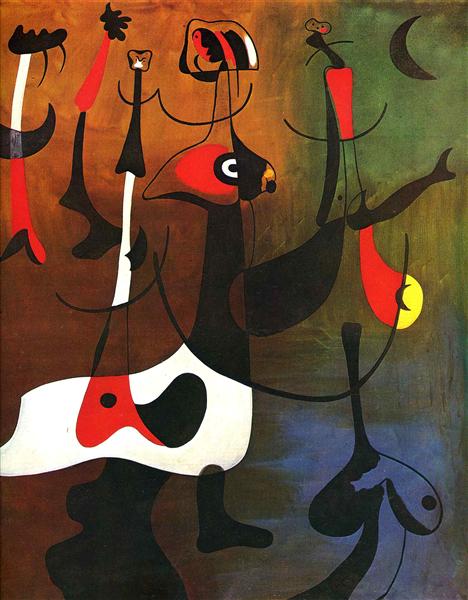Joan Miró

Not all of the Surrealists were interested in rendering their enigmatic personal dreams. Some found this highly introspective subject matter meaningless to the observer and sought a more universal form of expression. The Automatist Surrealists believed that the unconscious held such universal imagery, and they attempted to reach it through spontaneous, or automatic drawing.
The Catalan artist Joan Miró (1893-1983) exhibited regularly with the Surrealists but never formally joined the movement. Miró’s biomorphic abstraction is also intended to free the mind from rationality, but in a more benign manner. His Rhythmic Characters, is populated by curving biomorphic primal or mythic shapes and forms that are arranged by chance, and seem to emerge from the artist’s mind uncensored, like doodles, to dance gleefully around the canvas. The Surrealists used the free association of doodling to relax the conscious mind and allow images to bubble up from the unconscious. Miró reportedly doodled on his canvases before working up in paint the shapes and forms revealed there His forms to seem to take shape before our eyes, but their identity is always in flux. Miró was also fascinated by children’s art, which he thought of as spontaneous and expressive and, although he was a well-trained artists himself, he said that he wished he could learn to paint with the freedom of a child.[1]
- Marilyn Stokstad, Art History, vol. 2, 4th ed, (Upper Saddle River, NJ: Prentice Hall: 2011), 1058. ↵

